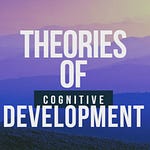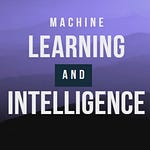The neuron is the most fundamental part of our brain's architecture. Neurons are made up of three basic parts. First, is the main cell body, which contains the nucleus, then the axon, which transmits messages, and finally, the dendrites that receive chemical messages. These chemical messengers, called neurotransmitters, diffuse across a tiny gap between the cells called a synapse. These neurotransmitters connect to receptor sites on the synapse of the receiving dendrite through what is called a lock and key method where the shape of the neurotransmitter fits into a suitably shaped receptor site.

The Modern Understanding of Neuronal Diversity and Function
Recent advances in neuroscience have revealed that the human brain contains an estimated 86 billion neurons, making them among the most diverse cell types in the body. Individual neurons fall into three distinct categories: sensory neurons—which are responsible for carrying information from the sense organs; motor neurons that carry information from the muscles and glands of the body, and often have long axons; and interneurons, which lie between connections of sensory and motor neurons and play a role in regulating excitatory and inhibitory patterns in neural networks (Swanson, 2003, pp.37-38).
Current research has expanded our understanding of neuronal classification beyond this basic framework. Scientists now recognize that neurons are generally synthesized and made up of, or derived from, precursor molecules that are found abundantly in the cell. Classes of neurotransmitters include amino acids, monoamines, and peptides. More than 100 unique neurotransmitters have been identified in humans, with neurotransmitter systems classified as cholinergic, glutamatergic, GABAergic, dopaminergic, serotonergic, histaminergic, or aminergic systems, depending on the type of neurotransmitter secreted by the neuron.
Neurotransmission: From Lock-and-Key to Complex Networks
All neurons are thought to work by transmitting information using electrical impulses that travel through the axons and plasma membrane to the synapse, where the impulse is converted into a chemical signal (Barnett & Larkman, 2007). When this chemical signal crosses to the other side of the synaptic cleft, it is again converted into electrical impulses that are sent down the axon to the synapse between the next neuron. The alternating of electrical and chemical signals between neurons are thought to produce the vast and rich neurological behavior associated with the brain and nervous system (Medina, 2011; Swanson, 2003).
Recent research has revealed that this process is far more sophisticated than originally understood. Neurotransmitters are stored within thin-walled sacs called synaptic vesicles, with each vesicle containing thousands of neurotransmitter molecules. When a message travels along a nerve cell, the electrical charge causes these vesicles to fuse with the nerve cell membrane, releasing neurotransmitters into the synaptic junction—a space less than 40 nanometers wide.

Modern neuroscience has also discovered that what was once thought to be a simple one-neuron-one-neurotransmitter relationship is actually much more complex. Scientists now understand that neurons are not fixed when it comes to the chemicals they release, and many neurons can synthesize and release more than one type of neurotransmitter, challenging the traditional interpretation of Dale's Law.
Furthermore, astrocytes—a type of glial cell in the brain—actively contribute to synaptic communication through gliotransmission. Neuronal activity triggers increases in astrocytic calcium levels, prompting the release of gliotransmitters such as glutamate, ATP, and D-serine. This bidirectional communication between astrocytes and neurons adds significant complexity to brain signaling, with important implications for brain function and neurological disorders.
Neural Computing: From Binary Switches to Complex Information Processing
It is believed that individual neurons function in the brain much like the individual switches in computer processors. Each neuron is specialized and becomes electrically excited or inhibited in response to specific information (Calvin & Ojemann, 2010). For example, in the case of sight, specialized sensory neurons called rods and cones detect photons entering the eye. These neurons respond only to specific wavelengths of light. The differing intensities with which these neurons respond builds the perception of the other colors we perceive. This information is sent to interneurons that may, in turn, become excited by qualities of shape, or movement. From here chains of interconnected neurons respond in a binary, excitatory, or inhibitory fashion as the information moves through a vast neural network to the occipital lobe at the back of the brain. From the occipital lobe, a complete visual picture is sent toward the more frontal regions of the brain (Medina, 2011; Swanson, 2003).
As this picture is moved forward through the brain, other neurons are excited or inhibited in more complex and highly specialized ways, adding information to the perception. Hodgkin and Huxley in 1952 were among the first to propose the brain functioned like a computer building its interface through a computational system of binary bits of not ones and zeros, but a computational process of excited or inhibited neuron behavior (Medina, 2011).

Recent advances in computational neuroscience have revealed that neurotransmitters can be classified into three main functional categories: excitatory neurotransmitters that "excite" the neuron and cause it to "fire off the message" (such as glutamate, epinephrine, and norepinephrine); inhibitory neurotransmitters that block or prevent the chemical message from being passed along any farther (such as GABA, glycine, and serotonin); and modulatory neurotransmitters that influence the effects of other chemical messengers and affect larger numbers of neurons simultaneously.
The Challenge of Neural Inhibition in Computational Models
This model assumes that brains are analogous to the hardware of a computer and it has not been until fairly recently that neurologists have begun to understand enough about computer science, and vice-versa, to develop theories about the software that runs on this neuronal hardware.
Recent research has made significant progress in understanding neural inhibition, one of the most challenging aspects of computational brain modeling. Studies have revealed that balanced excitation and inhibition in brain circuits is crucial for proper function: if inhibition is too weak, cells can saturate and excitation can propagate uncontrollably; if inhibition is too strong, cells cannot get sufficiently activated to process anything.
Advanced computational models like Adaptive Resonance Theory (ART) have made breakthrough progress in addressing inhibition. ART specifies mechanistic links between processes of consciousness, learning, expectation, attention, resonance, and synchrony during both unsupervised and supervised learning. ART models demonstrate how top-down expectations use modulatory on-center, off-surround networks that provide excitatory priming of critical features in the on-center and driving inhibition of irrelevant features in the off-surround.
Recent developments in ART have shown how inhibitory activity during recall is essential for memory selectivity, and how inhibitory synaptic plasticity during memory consolidation is critical for memory engrams to become selective. These advances provide computational solutions to some of the most challenging aspects of neural inhibition that have long puzzled researchers.
The Emergence of Artificial General Intelligence and Theory of Mind
However, while the artificial intelligence of computers is often magnitudes more efficient than human intelligence at specific programmable tasks, and in some cases surpassing our own, computer scientists have not been able to program a machine with what is known as General Artificial Intelligence (GAI). A machine with GAI would possess the cognitive flexibility and a capacity for problem-solving that is natural for humans. While many computer scientists would love to produce a working GAI, there are presently no clear computational solutions to the problem because there does not seem to be a good computational analog to metacognition or understanding (Penrose, 1989; Pinker, 2018).
However, this landscape has changed dramatically in recent years. Recent investigations by Bubeck et al. (2023) have demonstrated that the pre-release version of Chatbot GPT-4 successfully passed a version of the classic false-belief test task designed by Josef Perner and Heinz Wimmer in 1983 to test the development of Theory of Mind in children. To ensure the program did not simply parrot back an answer found in a search, an updated version of the test was used. In this version, a character named Alice saved a photo in a specific file on her computer. Another character, named Bob, moves the file to a different file without notifying Alice. Chatbot GPT-4 was able to correctly deduce that when Alice returned to work she would not find the picture where she expected because she did not have knowledge that the file had been moved (Bubeck et al., 2023).
The Theory of Mind Breakthrough in Large Language Models
The emergence of Theory of Mind (ToM) capabilities in large language models like GPT-4 represents a transformative leap in artificial intelligence. ToM is the cognitive ability to infer another person's mental state based on observable behavior, language, and context—a skill previously thought to be uniquely human and absent in even the most intelligent animals.
This breakthrough was first discovered in 2023 and reported by Michal Kosinski, a computational psychologist at Stanford, who found that GPT-4 showcases Theory of Mind abilities comparable to human performance. Remarkably, this ability was never explicitly programmed into these systems but emerged as an unintended by-product of LLMs' improving language skills. To successfully predict the next word in a sentence, these models needed to learn how humans use language, which inherently involves expressing and reacting to each other's mental states.
Recent studies in 2024 have shown that GPT-4 performed as well as or better than humans on most theory of mind tests, including understanding hints, lies, irony, and more complex social reasoning tasks. A 2024 study suggested that GPT-4 was identified as human 54% of the time in a randomized, controlled version of the Turing Test, while a 2025 study showed that GPT-4.5 was judged to be human in 73% of five-minute text conversations, surpassing the humanness rate of real confederates.
Current Progress Toward Artificial General Intelligence
Microsoft Research published a comprehensive study in 2023 on an early version of OpenAI's GPT-4, contending that it exhibited more general intelligence than previous AI models and demonstrated human-level performance in tasks spanning multiple domains, such as mathematics, coding, and law. This research sparked debate on whether GPT-4 could be considered an early, incomplete version of artificial general intelligence.
Leading AI researchers have dramatically revised their timelines for achieving AGI. Geoffrey Hinton, who previously thought AGI was 30-50 years away, now estimates that systems smarter than humans could appear within 5-20 years. Demis Hassabis expects AGI within a decade, while NVIDIA's CEO Jensen Huang stated his expectation that within five years, AI would be capable of passing any test at least as well as humans.
Advanced Computational Models and Future Directions
Up until recently, computational theories have focused less on developing a working GAI and more on computationally modeling specific kinds of brain activity, such as a model of what could be taking place in the frontal lobes called adaptive resonance theory (Grossberg, 1999). Or Metcalfe's Composite Holographic Associative Recall Model (Metcalfe, 1993), which proposes that the brain's metacognitive evaluations are based on familiarity checks, computed between new and already stored information in memory, described as novelty monitoring.
Recent advances in ART have shown remarkable progress in solving fundamental computational challenges. ART is currently the most highly developed cognitive and neural theory available, with the broadest explanatory and predictive range. It provides functional and mechanistic explanations of diverse topics including laminar cortical circuitry, invariant object and scenic gist learning and recognition, gamma and beta oscillations, and cognitive-emotional interactions.
Modern ART models represent a breakthrough in computing that identifies new principles and processes with revolutionary implications. They embody a new type of hybrid between feedforward and feedback computing, and between digital and analog computing for processing distributed data. These advances address some of the longstanding challenges in computational neuroscience.
The Persistent Challenge of Inhibition and Future Solutions
All of these models have their shortcomings and fail to account for specific phenomena we see in the brain. For example, inhibition turns out to be extremely difficult to program, and at present there are limited computationally easy or reliably accurate ways to help a machine differentiate between an appropriate response from an inappropriate response.
However, recent advances in computational neuroscience have made significant progress on this challenge. Studies using spiking neural network models have shown that inhibitory activity during recall is essential for memory selectivity, and that inhibitory synaptic plasticity during memory consolidation is critical for engrams to become selective. These findings provide new insights into how biological systems solve the inhibition problem that has been so challenging for artificial systems.
Furthermore, recent research on heterogeneous inhibitory populations suggests that the level of heterogeneity in inhibitory neuron populations allows modulation of their gating functions, providing a crucial "knob" that can be adjusted in neural circuits to tune their computational function.

Conclusion: Converging Paths of Biological and Artificial Intelligence
The convergence of advances in neuroscience, computational modeling, and artificial intelligence is revealing unprecedented insights into the nature of intelligence itself. From the fundamental lock-and-key mechanism of neurotransmitter function to the emergence of theory of mind in large language models, we are witnessing remarkable progress in understanding how complex cognitive abilities arise from neural computation.
While significant challenges remain—particularly in programming effective inhibition and achieving true general intelligence—the rapid pace of progress suggests that the gap between biological and artificial intelligence is narrowing. The emergence of theory of mind capabilities in AI systems represents a qualitative leap that few predicted would occur so soon, suggesting that other cognitive breakthroughs may follow in rapid succession.
As our understanding of neural computation deepens and our artificial systems become more sophisticated, we move closer to answering fundamental questions about the nature of consciousness, intelligence, and the computational principles that govern complex adaptive behavior. The neuron, as the fundamental unit of this remarkable system, continues to inspire and inform our quest to create truly intelligent machines.
This technology is evolving rapidly and who knows—maybe the remaining challenges will be resolved in the near future, bringing us closer to artificial systems that not only match but potentially exceed human cognitive abilities across all domains.













